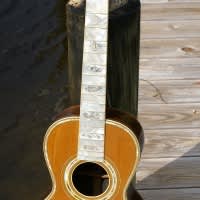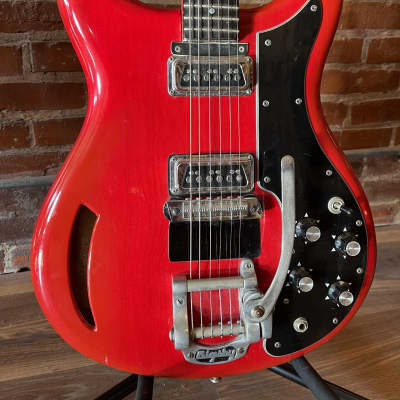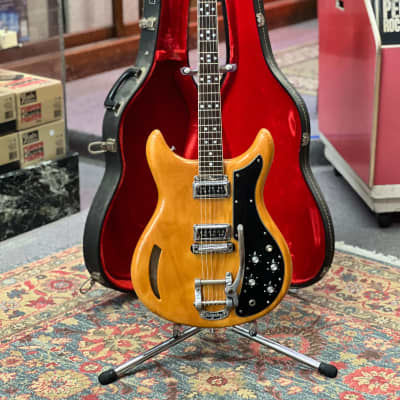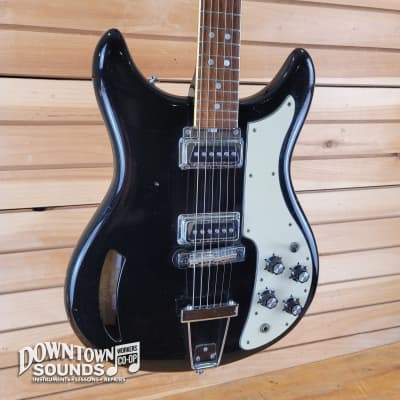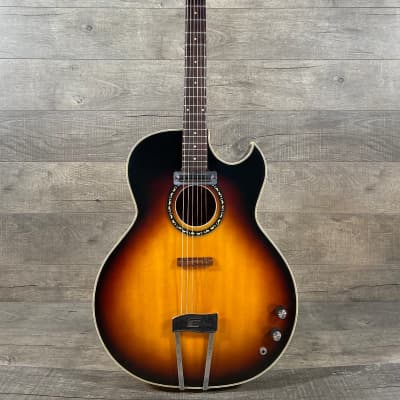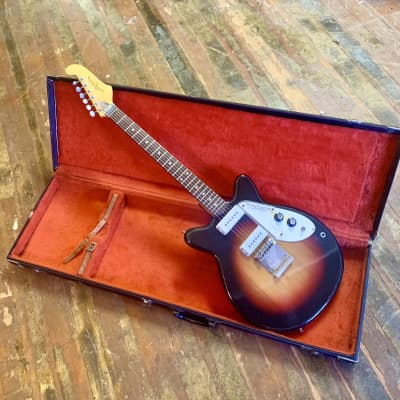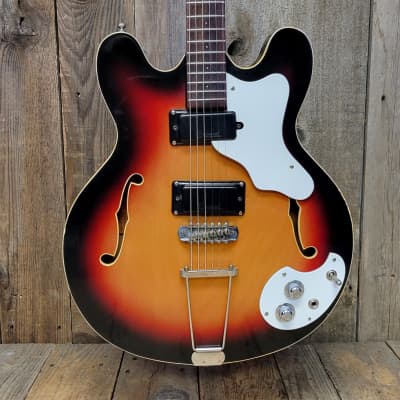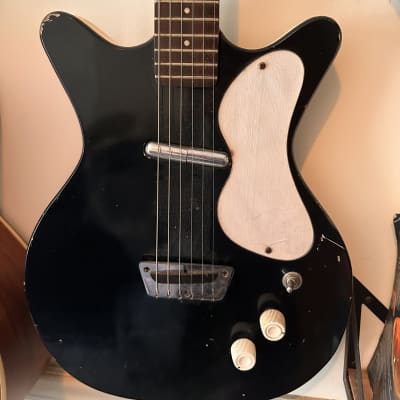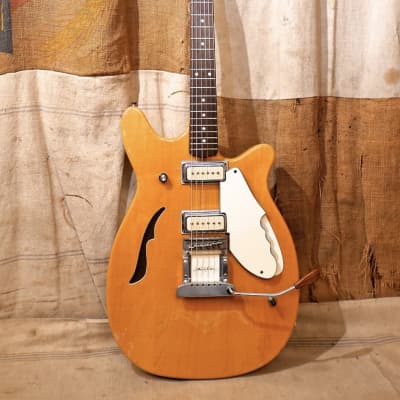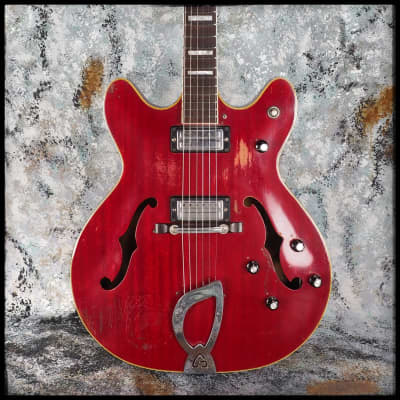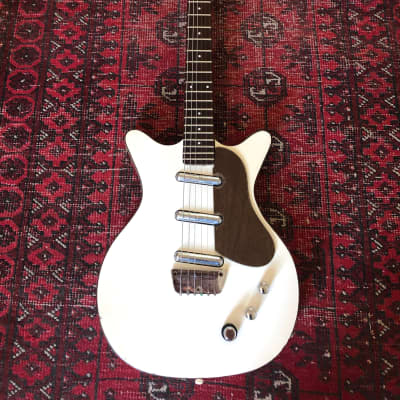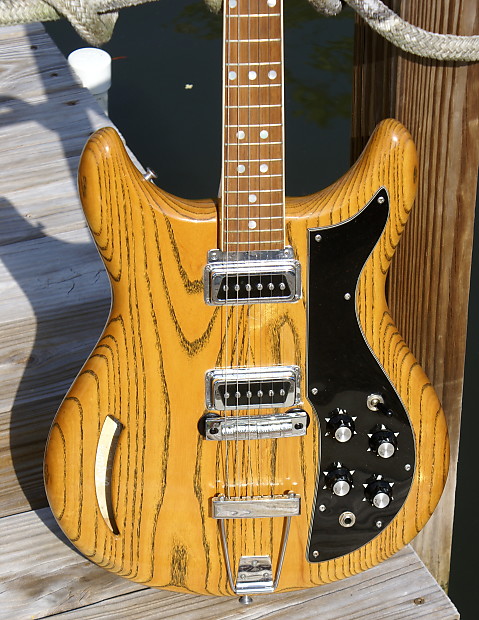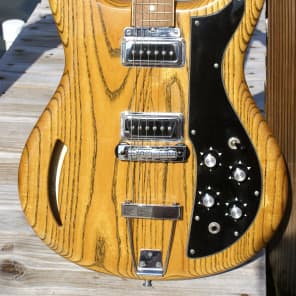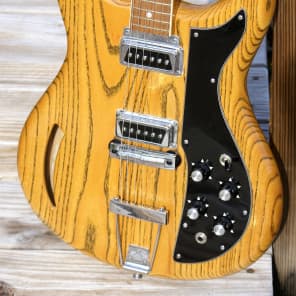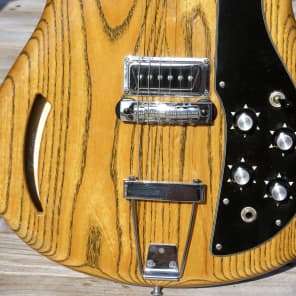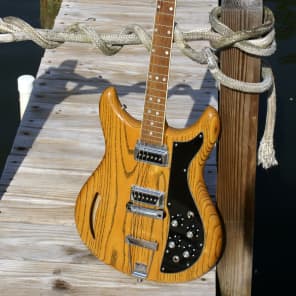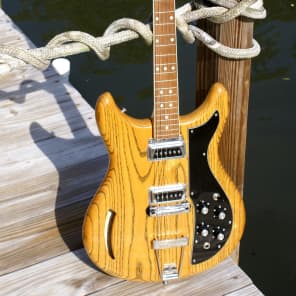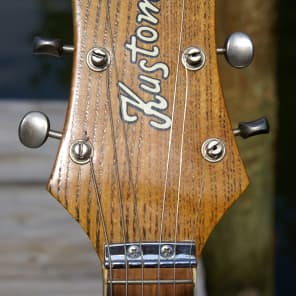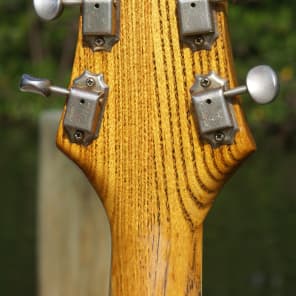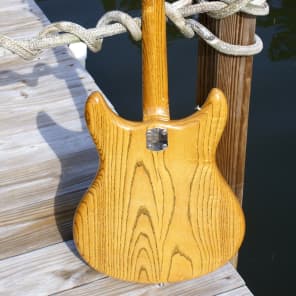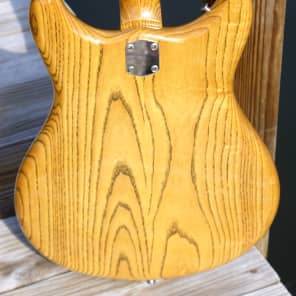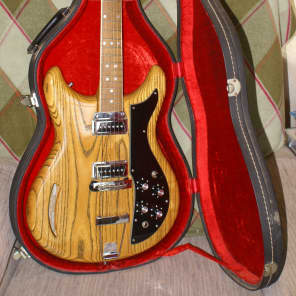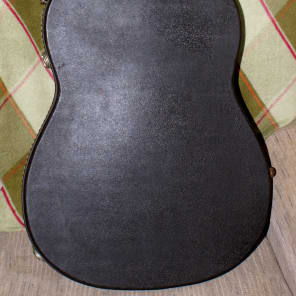1969 Kustom K200 Electric GuitarBud Ross designed a companion guitar in 1966; but that, according to Ross, got expropriated by the Holman-Woodell factory in Neodesha, Kansas, and became one of their Wurlitzer models. In 1967 he hooked up with Doyle Reeding and Wesley Valorie who began producing the Kustom guitar line.
Kustom Guitars History.
The idea for a Kustom guitar began in 1966, when [Bud] Ross [founder of Kustom] and some other local guitarists got together a design for an electric guitar. At that time there was a guitar manufacturing factory just starting up in Neodesha Kansas. According to Ross, he approached the Neodesha factory with the Kustom design and they agreed to produce them, with Kustom marketing the guitars under the Kustom name.
According to Ross, this plant did indeed produce some of the guitars he’d designed, but instead of delivering them to Kustom, the guitars were sold to Wurlitzer and bore the Wurlitzer logo. Wurlitzer did, in fact, market solid-body electric guitars manufactured by the Neodesha factory, although whether or not the styles most frequently found are the ones designed by Bud Ross and friends is uncertain. Needless to say, Ross was bummed out and he forgot about guitars. Until, that is, one day in 1967 when one Doyle Reeding came knocking at his door.
Reeding had been a local woodworking teacher who quit teaching to work over in Neodesha at the guitar factory. For one reason or another, Reeding and the guitar factory had parted company. Reeding had some ideas for a guitar and wanted to make them for Ross. At about this time the Neodesha factory went out of business, but the chronology here has become a little fuzzy with the passing of time.
Reeding moved to Chanute in the fall of ’67 and he and Ross set up the guitar making factory. Another woodworking teacher was hired, Wesley Valorie, and the three set about designing and making Kustom guitars.
Kustom guitars, with a design completely different from the Wurlitzer model, debuted in the summer of 1968. They were semi-hollow bodies made of four pieces of wood. Two were laminated together and hollowed out, making a front, another two a back, then glued together to complete the body. The thin fast necks were bolted on and have a curved truss rod design. Pickups were DeArmond, vibratos by Bigsby. Input for the design was provided by none other than country guitar wizard Roy Clark, who claimed to take the best features of some of his favorite electric guitars and modify them to make them even better.
It’s easy to see why someone would think that either Rickenbacker or Moseley had something to do with these guitars. The body with its single cats-eye sound hole is similar in design to Rickenbacker’s, even the knobs emulate Rickenbacker. The neck is skinny and very fast, two piece maple with zero fret has a feel & similar details to Mosrite’s. However, these were the original (wherever they got their inspiration) and hail from Kansas.
The guitar came with dual single coil DeArmond pickups that were designed to one-up or better the Rickenbacker sound. An adjustable bridge enables one to dial in intonation similar in design to Gretsch’s. A control panel on the guitars pick guard that included individual volume and tone controls for each pick up, a Gibson style toggle switch and a front mounted input jack. The bolt-on neck was topped with a rosewood fretboard inlaid with two dots for each position marker except the 12th fret which differentiates itself with a 3 dot marker and subsequently there were 2 markers at the high G and high A fret, then one each at the B fret and C sharp fret. The neck was bound and had a steel nut.
Kustom guitars were really quite well made and are fascinating pieces of ‘60s American guitar history. Ross estimates that between 2000-3000 were produced between 1968 and ’69, though since it was really a small operation, those numbers are likely quite generous. They were basically distributed through Kustom amp dealers. I first knew of them when a dealer friend offered me one.
I saw my first Kustom amps around 1967. Tuck & roll black naugahyde or blue sparkle vinyl. Even in an era of tuck and roll, using it on an amp was different.
Kustom amps were the brainchild of Bud Ross and Fred Berry of Chanute, Kansas, who came up with the idea in around 1965. They were among the earliest solid-state amps (Kay’s 1963 Vanguard line was the first). Actually, the tuck and roll part began in the late ‘50s. A friend brought a trashed Fender Bassman amp to Ross who repaired it and re-covered it with tuck and roll, and very quickly other amps started coming in for the Ross treatment. Kustom amps were soon known as some of the badest powerhouses of the late ‘60s.
KUSTOM
GUITAR
K200
1969
Zebrawood
UNDERVALUED.
COLLECTIBLE.
UNDERAPPRECIATED.
A Guitar Every
Collector Should Own.
KUSTOM GUITARS are high on my list of the “TOP TEN Most Unknown, Underappreciated, and Undervalued” guitars in the vintage guitar marketplace. They are special and magical and should be in the collection of every guitar lover and player in the world. But, of course, that wont happen because there are so few of them left
NECK: Maple. Like Mosrite, skinny, very fast, flat, no discernible wear.
FINGERBOARD: Brazilian Rosewood.
INLAYS: Domino Dots
FRETS: No discernible wear
TUNERS: Grover. ”Kluson” style
PICKUPS: Two Original vintage DeArmond- Rowe single coil high gain pickups, (also spec’d for Martin f-50/ f-55/ f-65 electric guitars). 9.6k neck and 10k bridge, perfect condition.
CONTROLS: 2 Volume and 2 Tone. Rickenbacker style knobs.
COLOR: RARE Zebrawood
CONDITION: Time Capsule, Pristine Museum Quality
Original Hard Sheel Case
CONDITION: This guitar is in excellent condition. Please ask for additional description if you like.
Compare to the one listed for $2995 + 55 shipping -
https://reverb.com/item/1322698-kustom-k200b-1969-zebrawood-vintage-collectibleVideo demonstration -
*Please see our other listings and store for many other
Vintage (Lap Steel) Guitars and Amplifiers. We currently have Alamos, Audio
Vox, Bronsons, Dickersons, Dobros, English, Epiphones, Fenders, Gibsons, Harlin
Bros, Harmonys, Kays, Maestros, Magnatones, McKinney, Nationals, Oahus,
Rickenbachers, Sho Bud, Silvertones, Supertones, Supros, Vegas, and White Lap
Steels as well as several others. We've been in the guitar business for over 50
years. We encourage you to contact us with any questions or comments*
*We also accept Cashier's Checks, Bank Transfers &
other forms of payment. We ship (worldwide) at cost. Please contact for
information.*
We ship (worldwide) at cost. Reverb's shipping calculator
gives a generalized figure which maximizes cost. For more accurate quotes,
please contact us with your location & we'll see if we can't reduce this
cost.
